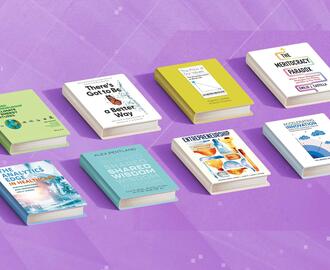Credit: Mimi Phan / Shutterstock
New businesses sprout from the idea of providing a product or service to a customer, but it’s relationships that sustain those businesses as they grow.
As the former CEO of IBM, Ginni Rometty oversaw both growth and decline at the 110-year-old technology company, along with acquisitions, divestments, and a new direction for diverse workforce hiring.
During her Oct. 27 talk at MIT’s Tough Tech Summit, Rometty, who was recently announced as MIT’s next visiting innovation fellow, highlighted three areas where leaders can build and strengthen their relationships for the benefit of their employees and their business.
Build better teams by removing artificial barriers to hiring
When Rometty took IBM’s helm in 2012, the company had just launched its partnership with the Pathways in Technology Early College High School in Brooklyn, New York, offering students mentorship and hiring preferences for company job openings.
Moved by her mother’s experience trying to find work without a traditional college degree, Rometty continued to lead IBM’s efforts with the P-TECH program expansion as well as changes in the company’s hiring criteria. By 2021, IBM had removed bachelor’s degree requirements from half of its U.S. jobs.
Looking at someone’s skills and not just their education allows companies to remove artificial system barriers, Rometty said. Employees come to work with the skills they have, build more skills, and feel valued. This translates to more employee engagement and company loyalty.
“I authentically believe I get a better team and more innovation and a better product if I have this kind of team,” said Rometty, who now serves as co-chairwoman for OneTen, an organization aimed at hiring 1 million Black Americans without four-year degrees to family-sustaining jobs by 2030.
“If you're in a war for talent, then go look at the pools (of talent) you haven't looked at,” Rometty said. If you’re willing to consider people for their skills and eagerness to learn, “I think you will be pleasantly surprised” by who you find, she said.
Build company partnerships on beliefs and related purpose
In 2019, IBM acquired open source software company Red Hat. Whether it came as a surprise or not to industry watchers, Rometty said those who were paying close attention when the two companies started working together decades earlier could probably have predicted the purchase. She talked about what she called “building belief.”
“We carefully crafted some partnerships, we were testing the waters to see how the market would react,” she said. “Could I — with proprietary products in some cases — buy an open source software company, and could I preserve it and its relationships? I was testing my beliefs about that and my customers' beliefs.”
Those beliefs are critical when it comes to companies working together, but so is having a bridge between all companies involved in the relationship. If you’re a smaller company partnering with a larger firm, you must connect your company’s purpose with that of the larger company, otherwise you risk unraveling the relationship — or prompting a divestment — because there is no clear connection and reason to work together.
Build a board relationship by taking stock in strengths and weaknesses
Rometty sits on a variety of boards, including ones for JPMorgan Chase, Northwestern University, and the Brookings Institute. She also led IBM’s acquisition of 65 companies, so she understands the struggle a younger company can have as it balances early growth with a controlling board.
Something that works for both young and established companies is writing down a matrix of things you think the company needs and things you are not yet good at, and then looking at your board members and what they bring to the table.
“That simple matrix forces you to be honest about what you're good at and not,” Rometty said. “It also gives you a really good basis to have a discussion with someone to say why you don't want someone on the board.”
Rometty also said she doesn’t like “kitchen cabinets” and prefers to treat everyone as a mentor with valuable advice, whether it’s a board member or a colleague.
“If you ask people for input or ask for help and are willing to listen, there's not a person who won't help you, if you respect and listen more than you talk,” she said. “This listening with intent, this ability to say to people ‘Just tell me what you might do,’ I don't know anybody who doesn’t feel then that they're not vested in your success.”
Read next: The 3 leadership types in a nimble organization



